This is Day 73 of self-quarantine. And the beat goes on.
Many Hot Stove readers have escaped quarantine by playing golf – a game by its nature a form of social distancing. There have been some changes. Don’t touch the pin. No rakes in the sand traps. No clubhouse. One person per golf cart. Or in some places no carts, meaning you have to carry your clubs or roll them along on a wheeled gadget. As headlined in the Wall Street Journal: “We’re out of toilet paper, hand sanitizer – and golf pushcarts?” Google has documented that the top trending retail category last month was golf-bag accessories, and the most popular subtopics were golf pushcarts, golf pull carts and, selling on eBay at a premium, the Clickgear 4.0.
But I have not been out on the links. Short version: I no longer play. Long version: Teeing it up for you now.
Lonnie and (Bad) Golf – No Touch: I did not play golf until I was almost 40 years old. In 1979, I had joined my law school classmate Jim Polsinelli at his law firm on the Plaza. At a firm retreat, Jim gave me some pointers on playing golf. It was harder than it looked. He told me not to worry, I would never be nearly as good he was anyway. Presumptuous? Jim’s not the bragging type. Premature? I thought I had fairly good hand-eye coordination and was in decent physical shape. But then he explained. Golf is a game of touch, especially the short game. He started as a kid and experienced almost 30 years of touch that I had skipped. Long story short – he was right.
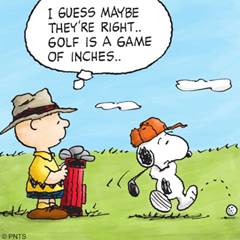
But I tried for several years. I played a lot with my friend and client Rich Ellison who had a corporate membership at Leawood South. I took a few lessons with the pro at the club. Played some interesting 9-hole rounds with David Block, Steve Caffey, Mickey Dobratz and Don Thellman on Friday afternoons at Oakwood. Went to other clubs where friends were members. Loved the atmosphere, the smell of the fresh cut grass and the camaraderie. Did not love my golf game. Rich and I were playing one day with Albert Riederer and Bob White, and I commented that I was wasting my time playing poor golf. Bob asked me how often I had thought about my work at the office while playing the round. Well, not at all. Like an escape from quarantine. Good point.
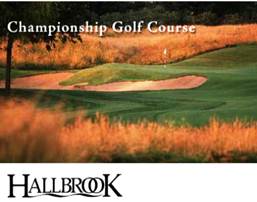
So I continued. The new Hallbrook course opened in 1988, and Rich encouraged me to join him there as a member. Other friends like Randy Nay and Bill Knoth were also joining. I became a member…for the privilege of playing on one to the hardest courses in the city. Bad move. Oh there was still the camaraderie and the beauty of the setting, but the course was unforgiving for mediocre level golfers. Several holes had tall grass just off the tee. If you topped your drive, it took a couple of shots just to get out of that grass. The water hazards were like targets for me. Jim Polsinelli came as my guest to try out Hallbrook. He arrived late and started on the second hole. For the 17 he played, he shot one over par. Touch.
I took more lessons. Bought a better set of clubs. Went to a week-long golf school. Wayne Tenenbaum brought in Bob Rotella, a sports psychologist, to teach the “mental” game to a group of Wayne’s friends. None of it really took. I broke 100 a few times, but just barely. I offer as documentary evidence my last handicap card:
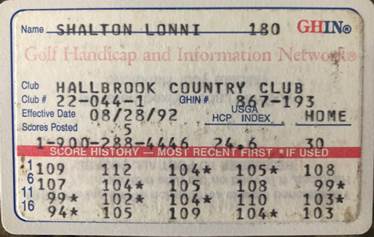
But that’s not why I gave up golf. I got extra busy at work and was doing a lot of traveling. Rich Ellison injured his back and could not play as often, and so we started what would become 20 plus years of Saturday lunches. Golf faded out. Haven’t played in years. My camaraderie time is now filled with coffees, lunches and happy hours (and, temporarily, Zoom). I watch golf on TV.
In these quarantine days, I sometimes envy my golf-playing friends. Several of us “vintage” lawyers meet monthly for lunch (for now, Zoom), but setting a date can be difficult because golfers Tommy Taylor, Harlan Stamper, Jack Kilroy and Larry Ward can be resistant to planning too far ahead. As Larry likes to say, the date for lunch depends on the weather and available tee times. I get it.
[Touch Trivia: Many years after Jim gave me my tutorial about touch, I saw a similar message from the legendary Chicago writer Mike Royko. He warned that a young man taking up golf, once addicted, will tell himself: “Maybe if I try graphite or titanium shafts, copper heads, lithium balls; I’ll read Ben Hogan’s book; watch Jack Nicklaus’ tapes. And lessons. I’ll even go to a golf school.” But Royko concludes that the young man is too late because almost all of the outstanding golfers started as “mere tots” whose dads “took them to the club pros and before their brains were fully functional, the muscles had committed a good swing to memory. Something like potty training.” Something like touch.]
Babe Ruth and (Good) Golf – The Swing : Baseball players and golfers swing a long club at a ball. Similar game? Sometimes. Other times, not so much, as noted in this conversation between Ted Williams and Sam Snead:
Williams: “How hard could golf be? The ball doesn’t even move?”
Snead: “Right Ted. But we have to play our foul balls.”
Babe Ruth played a lot of golf and is given credit for increasing its popularity. Newspaper photos and newsreels often showed him on the golf course during spring training and at charity events. His celebrity status made him the most famous golfer in the country. The best golfer was Bobby Jones, but golf was a minor sport then, lagging behind boxing, horse racing, college football and baseball.
The Babe got his start in golf in 1915 in Hot Springs, Arkansas. He was at spring training in his rookie year with the Red Sox. He fell in love with the game and famously used it to get in shape for the baseball season. Ruth became a Yankee in 1920, and the photo below shows him in early February of 1929 in St. Petersburg where the Yankees trained. This was also the year he welcomed a new teammate who would put Ruth in the golf history books.

The teammate was Sammy Byrd who was a part-time outfielder for the Yankees from 1929 to 1934. Sammy’s nickname became “Babe Ruth’s Legs” because he often came in to pinch run for Ruth and replaced him in the outfield in the late innings. But the big news here is that over those years, Sammy became known as the best golfer in the major leagues. A perfect match for Ruth.
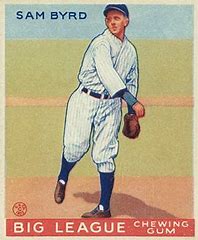
Sammy Byrd said the Ruth “loved golf” and would “rather play it than eat” (and Ruth had a huge appetite). “We played every chance we got.” Byrd gave Ruth pointers on golf and Ruth gave Byrd tips on hitting. And this is where golf history was made. Ruth’s batting lesson included a drill he used to keep his swing level. He put a handkerchief under his right armpit (the lead arm for a left-handed hitter) and practiced repeated swinging. The goal was for the handkerchief to stay in place – forcing his right arm to remain “connected” to his body. Ruth also told Byrd to “brace” his back leg, coil around it and then fire through with the core muscles for a balanced weight shift to the front leg.
Byrd left baseball in 1937 and became a professional golfer. He did very well and traced his proficiency back to Ruth. He took Ruth’s mechanics and just changed the angle of the plane of the swing. Byrd won six times on the PGA tour, took a third and a fourth in the Masters and was runner-up to Byron Nelson in the 1945 PGA Championship. He is the only person to compete in both the Masters and the World Series (a half inning as the defensive replacement for Ruth in Game 4 of the 1934 Series).
Byrd passed along the Ruth lessons to others (he coached Ben Hogan) and was instrumental in growing the industry of golf instruction. One of his protégés was Jimmy Ballard who tutored many PGA players using Babe Ruth’s ideas of “connection.” To this day PGA players can be seen doing the handkerchief drill (sometimes using a headcover or a towel). Below, Vijay Singh incorporates the drill while practicing on the driving range. Ruth’s approach is not universal, and many baseball players and golfers (and their instructors) use other techniques for individual hitting styles.
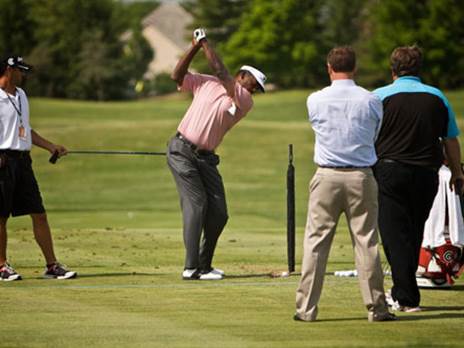
Ruth’s contribution is gaining new notoriety because of a book that came out earlier this month: Golf’s Holy War: The Battle for the Soul of a Game in an Age of Science. The author is Brett Cyrgalis, the golf writer for the New York Post, which recently ran an excerpt (my thanks to Steve Fuller for sending the article). The book is being touted as a Moneyball for golf, pitting science against art in these days of high technology. Do data and analytics replace or enhance the artistry and feel (touch!) of the game? Chapter 5 is titled “Babe Ruth and Teaching’s Evolutionary Jump.” I’ll let you golfers out there tell me if it’s a good book.
![Golf's Holy War: The Battle for the Soul of a Game in an Age of Science by [Brett Cyrgalis]](https://lonniesjukebox.com/wp-content/uploads/2020/06/golfs-holy-war-the-battle-for-the-soul-of-a-game.jpeg)
Jim Kaat and (Ambidextrous) Golf – Shooting Your Age: Jim “Kitty” Kaat was a left-handed pitcher who won 283 games and 16 consecutive Gold Gloves in an MLB career of 25 seasons. He is an almost-Hall-of-Famer, but it’s his golf game that I want to talk about. Also, please note that he violates the rule that you need to start young to play elite golf.
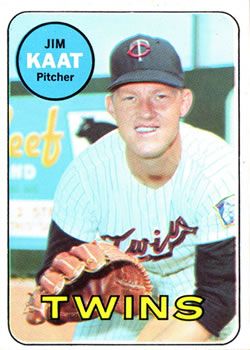
At about age 31, while pitching for the Twins, Kaat was coaxed by a friend to play a round of golf. He had no clubs and so rented some at the clubhouse. He was a lefty, but they only had right-handed clubs. So that’s how he played. For the next 25 years. In 1994, he was having trouble with his short game, and a friend suggested he try playing left handed. Turned out he was better from that side and so played mostly that way for several years.
In 2008, playing left-handed at age 70, Kaat shot his age. He did it again from the left side at ages 74 and 75.
That’s good golf, but that’s not the big story. Kaat continued to do some playing from the right side and liked to play against himself – righty v. lefty. In 2013, in one of those dual matches, Lefty Kaat shot a 78 (three over his age), and Righty Kaat shot a 75 – yes, he shot his age from the right side. Jim Kaat is very likely the only person who will ever shoot his age from both sides. Of course, not many people will try.

If there is ever an ambidextrous hall of fame, the inaugural class should be Jim Kaat and Leonardo Da Vinci. The next year, maybe induct switch-hitter Pete Rose.
[Shooting Your Age Trivia (1): I know of only one Hot Stove reader who has shot his age. If there are more out there, please let me know. My former law partner Dale Schulte has accomplished the feat at ages 70, 71, 72 and 73 (his current age). With his handicap of 7, I expect this will continue. He started at age 12. Touch.]
[Shooting Your Age Trivia (2): Buck O’Neil played golf into his 90s. When asked how he scored, he said “Yeah, I shoot my age in golf. But at my age that’s not a very good score.”]
I have not been going to the office, but went by last Sunday to pick up some books. There was an empty bobble-head box on my desk. Did not know what that meant. Three days later, my partner Tim Sear sent a photo of a gift he left for me. I had not noticed it on my visit to the office. It was on the mantle of my faux fireplace (below). It’s the Buck O’Neil bobble-head with Buck singing “Take Me Out to the Ball Game” (click here to listen). Thanks Tim. He strategically placed Buck next to my personalized Louisville Slugger bat that was given to me as a retirement gift by the Louisville office of my client Extell.
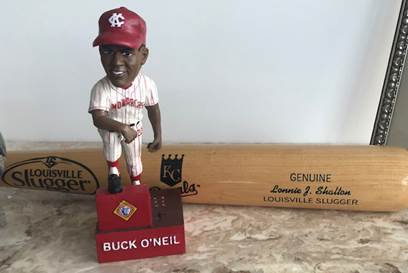
Yogi Berra and (Amphibious) Golf: Yogi Berra had his own version of ambidextrous golf. In baseball, he batted from the left side and threw from the right. When he started playing golf at about age 22, he took his natural hitting side and played lefty. After a couple of years, he found that he could hit the ball straighter from the right side – a little shorter off the tee, but without a slice. So he became a right hand golfer except that he continued to putt from the left. When asked by journalist Ann Liguroi if that meant he was ambidextrous, he responded, “I’m not Ann, I’m amphibious.”
This was not a one-time Yogi-ism. Referring to switch-hitter Mickey Mantle, Yogi said, “He hits from both sides of the plate. He’s amphibious.” One more, but with the other word: “I’d give up my right hand to be ambidextrous.”
In this 1963 UPI photo, the caption read that Yogi was holding his “ambidextrous golf clubs.”
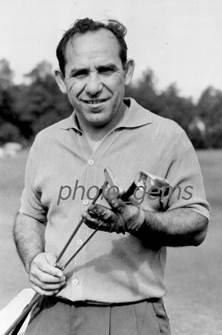
Some other Yogi-isms on golf…
Commenting on his performance after playing a poor golf game, “I think they just got through marinating the greens.”
“Ninety percent of putts that fall short don’t go in.”
A story from Yogi’s friend Floyd Hall: “ “I was below the hole with about a four-foot putt, and it was breaking to the right. Yogi was standing up above the hole looking down at it, and he said, ‘No, that doesn’t break right. It breaks left.’ So I putted the ball and it went right, and I said, ‘See, Yogi, it went right.’ And he said, ‘Yeah, but I’m left-handed.’”
Amphibian Yoga (not Yogi): To continue the amphibious theme, I’ll post a photo from one our walks around the lake at the Kauffman Foundation. This turtle is stretching all limbs and his head while he suns on a rock. Rita informs me that this is called “Locust Pose” in yoga. So I looked it up and found that it tones and strengthens the entire back of the body. The Sanskrit name for the pose, “Salabhasana” (shah-lah-BAHS-uh-nuh), comes from two words: Salabha for locust and Asana for pose. This may be more than you wanted to know.

Return to Loose Park: Rita and I had not been walking Loose Park because of the crowds. With the weather warming up, we went early a couple of mornings and were rewarded with safe social-distancing walks. The wildlife included the koi in the pond, a ton of squirrels, two chipmunks, some ducks, one blue heron, a pair of geese and their goslings (below) and one judge (Sandy Midkiff with her new dogs Milo and Buddy).

J. C. Nichols Memorial Fountain: The fountains of Kansas City usually start running in April, but in this unusual year, that was postponed. Rita and I had a daily reminder of the delay – we have a view of the J. C. Nichols Memorial Fountain from our condo. The good news – the water started flowing last week.
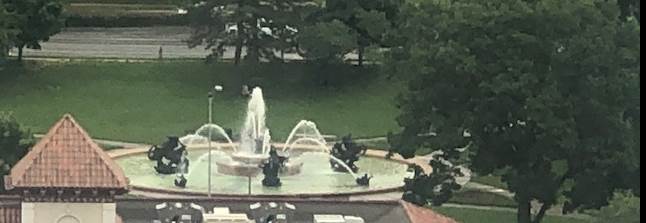
Lonnie’s Jukebox – Pirate Radio: A few weeks ago, I saw an obit in the New York Times under the headline “Ronan O’Rahilly, 79, ‘Hustler’ and Showman Of Pirate Radio Dies.” I did not recognize the name, but I knew his work. O’Rahilly was the audacious Irishman who transformed rock ‘n’ roll broadcasting in the United Kingdom.
In 1964, the BBC controlled the airwaves in Britain. There were no commercial stations. One of the BBC radio stations played pop music for 30 to 60 minutes a day. And this did not include the likes of the Beatles and Rolling Stones who were being played constantly on the radio in America. But the BBC considered such music to be unfit for public broadcast. Enter pirate radio.
On the Saturday before Easter of 1964, the 23-year-old O’Rahilly kicked off Radio Caroline with Buddy Holly’s “Not Fade Away.” The station was housed in a Dutch freighter about three miles offshore, out of territorial waters and beyond any licensing requirements (hence, pirate radio). Soon there was an armada of stations and British rock ‘n’ roll fans were ecstatic. The authorities were not. Years of legal battles followed, and eventually the ships went out of business. Although some battles were lost, the war for rock ‘n’ roll on the radio was won – the BBC founded Station 1 in 1967 to play popular music, and many of the deejays from the ships were hired by the station.

Rita and I were familiar with the story because we saw the film Pirate Radio in 2009. It is a British film titled The Boat That Rocked, but was retitled as Pirate Radio for distribution in North America. It is available on demand at most screening movie sites ($4). See the trailer here.
The film is loosely based on Radio Caroline, and Bill Nighy is cast as the station owner. Philip Seymour Hoffman plays a brash American deejay inspired by Emperor Roscoe, a deejay on Radio Caroline. Kenneth Branagh plays the strict government minister trying to shut down pirate radio. The movie did not do well at the box office, but it’s fun and an interesting bit of history. And it’s got a killer soundtrack, a part of which will now be played on Lonnie’s Jukebox.

Click on the song title to play the music:
“Groovin’” by The Rascals.
“My Generation” by the Who.
“You Don’t Have to Say You Love Me” by Dusty Springfield.
“The Letter” by The Box Tops.
“Judy In Disguise” by John Fred & His Playboy Band.
“Georgy Girl” by The Seekers.
“The Happening” by The Supremes.
“Wouldn’t It Be Nice” by The Beach Boys.
“Dancing in the Street” by Martha and the Vandellas.
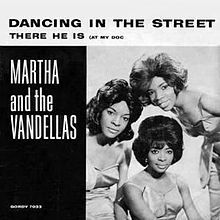
Lonnie’s Jukebox Bonus: Vahe Gregorian’s daily countdown of 53 songs for KC’s Stay-At-Home order appeared in weekly installments in Hot Stoves 124-131. These “Gregorian Chants” have been consolidated into one post at the Rock and Roll tag of Lonnie’s Jukebox. Click here.